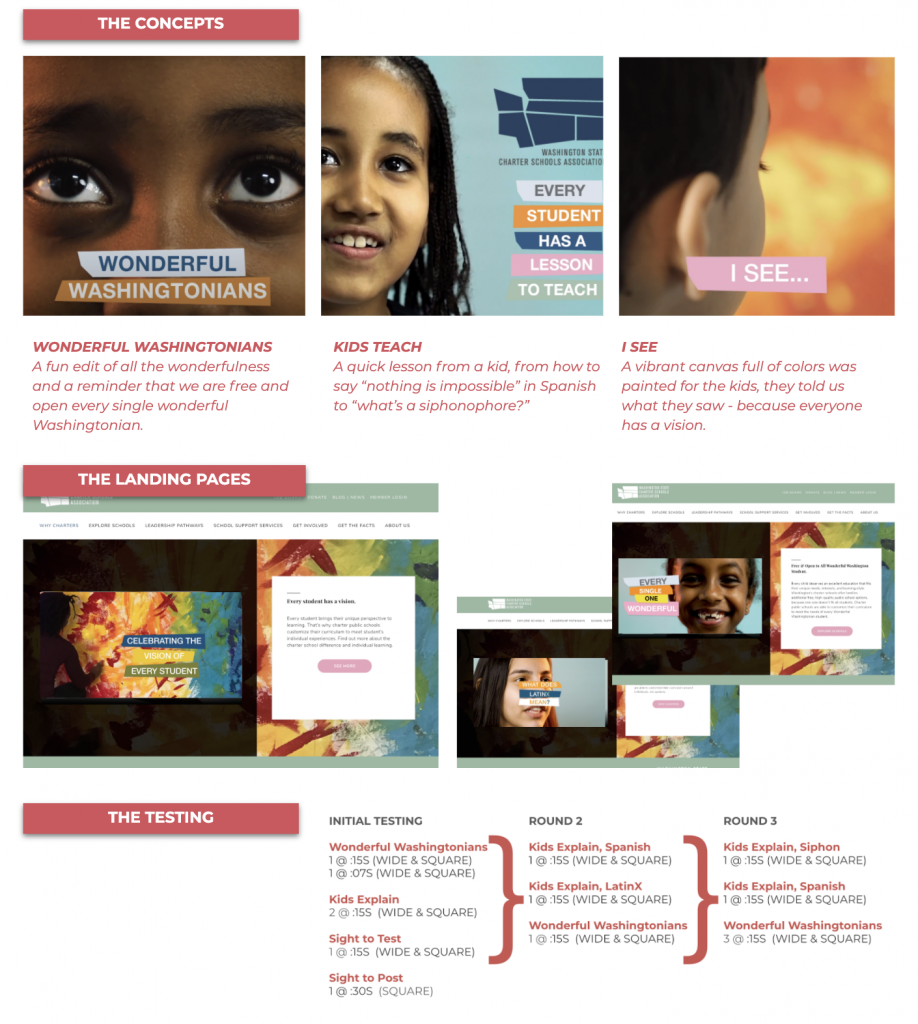Washington Charters
Charter schools are relatively new to Washington state. And, they’ve had a rough start. How do you build consensus among the general public, especially the non-parents, for their continued existence? Well, you start with research and you end with Siphonophore, obviously.
Understanding the Audiences Our research team took a deep dive into Washington State voters with qual boards and an online survey to discover what parents and non parents like thought of charter schools. This research gauged sentiment, message efficacy and sway-ability and was the bases for developing our creative strategy.
Then, our research team and creative strategy team got together to identify a target market. We were looking for those who would be most likely to not necessarily become our frontline advocates, but those mostly likely be sway-able toward our cause. And, they were the hardest to reach with our message – the non parents, 20-30 year olds who didn’t really even understand what a charter school is, nor care.
So, we got to work.
Our Approach We began with a creative brief that asked our teams to consider that our audience doesn’t think twice about public schools, they don’t have kids and they aren’t going to be swayed with adorable faces asking for help to keep their school open.
We developed three distinct video concepts. These were developed knowing we could only shoot our videos at the schools in two days, so we had to be nimble. Our media team developed a testing plan to optimize quickly, so we could explore how our concepts we fairing. Our video team edited together different executions so we could test more than one version of each concept.
In the end we had three concepts, with three executions of each concept to test online. And, a landing page to track not only the efficacy of the ads but the quality of the lead.
What We Learned. Our campaign had three rounds of testing on social, connected TV, and YouTube. Our concepts were developed as 15s and 7 second pieces and all drove to a unique landing page that answered the call to action and greeted the viewer with a longer video in the series.
One campaign “won” across all platforms, while another was a strong contender on social. With our learnings we returned to the edit suite and developed another video in the winning concept series and optimized our offerings. At the same time we took the original test and served it to a completely different audience to gain additional insights. This testing and optimizing is still in progress with a new video launching this week (5/22/20) int he “Kids Explain” series.
